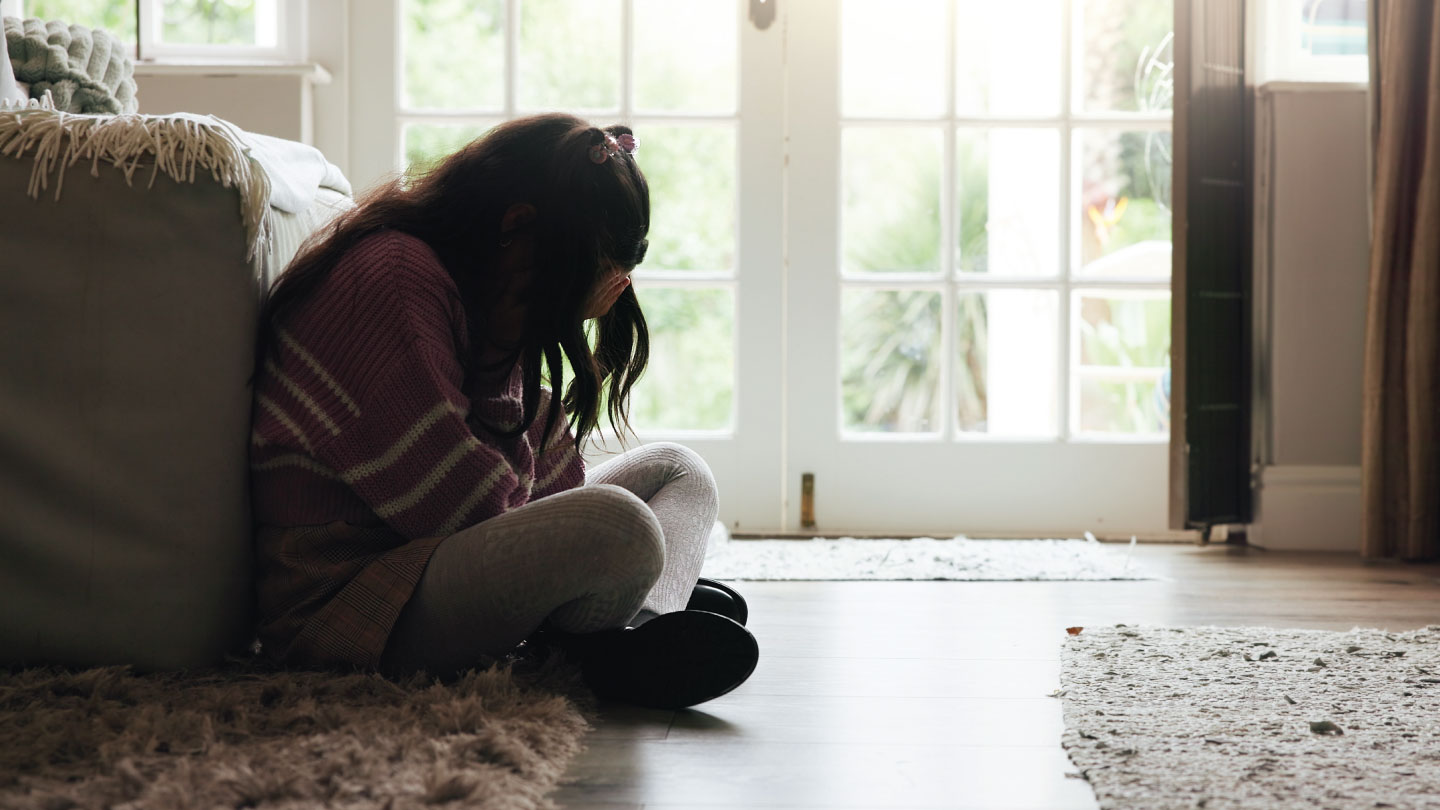Mental Health
A Guide on Surviving Post-Traumatic Stress Disorder
PTSD is manageable when addressed with a comprehensive approach involving professional therapy, trauma-focused treatments, and self-care strategies. Keep reading to know more.

This article is verified by Dr. Shreya Chakravarty, psychologist and deputy manager of UR.Life Life Studios.
According to the World Health Organisation, an estimated 3.9 per cent of the world population has had post-traumatic stress disorder (PTSD) at some stage in their lives. WHO also stated that more women are affected by PTSD than men. However, despite the higher prevalence among women, PTSD affects individuals of all genders and backgrounds.
According to the American Psychiatric Association, post-traumatic stress disorder (PTSD) is a psychiatric disorder that may occur in people who have experienced or witnessed a traumatic event, series of events, or set of circumstances. An individual may experience this as emotionally or physically harmful or life-threatening and may affect mental, physical, social, and/or spiritual well-being.
Managing PTSD is easy with the help of the right combination of professional support, therapeutic techniques, and self-care strategies. Engaging with a mental health professional, such as a therapist or counsellor trained in trauma-focused therapies, can provide tailored treatment plans and a safe space for processing experiences. Techniques like cognitive-behavioural therapy (CBT), eye movement desensitisation and reprocessing (EMDR), and mindfulness practices have proven effective in alleviating symptoms. Also, there are coping strategies that can help manage daily stressors related to PTSD.
Need all your wellness solutions in one place? A whole new world awaits just a click away.
Related story: 5 Subtle Signs That Show You're Feeling Lonely
Symptoms of PTSD
There are various range of symptoms associated with functional impairment, including:
- Re-experiencing the trauma
- Avoidance
- Hyperarousal (including hypervigilance, anger and irritability)
- Negative alterations in mood and thinking
- Emotional numbing
- Dissociation
- Emotional dysregulation
- Interpersonal difficulties or problems in relationships
- Negative self-perception
Related story: Trauma is Hereditary, Says Study
Events Associated with the Development of PTSD
Be aware of traumatic events associated with the development of PTSD. These could be experiencing or witnessing single, repeated or multiple events and could include, for example:
- Serious accidents
- Physical and sexual assault
- Abuse, including childhood or domestic abuse
- Work-related exposure to trauma, including remote exposure
- Trauma-related to serious health problems or childbirth experiences (for example, intensive care admission or neonatal death)
- War and conflict
- Torture
Related story: When Should You Go To Therapy
FAQs on PTSD
Can you live a happy life with PTSD?
Yes, it is possible to lead a fulfilling and happy life with PTSD. Many people with PTSD find that, with the right treatment and coping strategies, they can manage their symptoms effectively and pursue a meaningful life. Success in managing PTSD often involves a combination of therapy, self-care, support systems, and lifestyle changes.
Related story: 5 Approaches to Reframe Negative Thinking
What are the most effective treatments for PTSD?
The most effective treatments for PTSD include:
Cognitive Behavioral Therapy (CBT): This therapy helps people identify and change negative thought patterns and behaviours related to trauma.
- Eye Movement Desensitization and Reprocessing (EMDR): This technique involves processing traumatic memories while engaging in guided eye movements.
- Medication: Antidepressants and anti-anxiety medications can help manage symptoms. They are often used in conjunction with therapy.
- Exposure Therapy: This involves gradually and safely exposing individuals to reminders of their trauma to reduce avoidance and anxiety.
Related story: 5 Ways to Not Be Your Worst Enemy
What coping strategies can help manage daily stressors related to PTSD?
Exercise
According to a 2019 study published in Frontiers in Psychiatry, aerobic exercise may reduce the symptoms of PTSD and can be used as an effective form of treatment.
Exercise can offer significant benefits for those suffering from PTSD, extending beyond the mere release of endorphins and mood improvement. By concentrating on the physical sensations of movement rather than on intrusive thoughts, exercise can help reset the nervous system from a state of immobilisation. Rhythmic activities such as walking, running, swimming, or dancing, which engage both the arms and legs, are particularly effective. Pay attention to the sensations of your body—like the impact of your feet on the ground, the rhythm of your breath, or the feeling of the wind on your skin.
Additionally, engaging in more intense physical activities like rock climbing, boxing, weight training, or martial arts can help maintain focus on bodily movements, minimising the risk of injury and promoting mindfulness. Spending time in nature through activities such as hiking, camping, or mountain biking can also be beneficial. For those with PTSD, the relaxation and seclusion found in natural settings can aid in managing symptoms and transitioning back to everyday life.
Challenge Your Sense of Helplessness
Overcoming the feeling of helplessness is crucial for managing PTSD. Trauma can leave you feeling powerless and vulnerable, so it's important to recognise and tap into your own strengths and coping skills.
One effective way to regain your sense of control is by helping others. You can volunteer, donate blood, support a friend, or contribute to a charity. Taking positive actions like these can directly counteract the helplessness often associated with PTSD and reinforce your own sense of power.
Establish a Routine
Establishing a routine can bring structure and a sense of control to your day, which can be particularly helpful for managing PTSD. Here are some practical examples to consider:
- Morning and Evening Routine: Start your day with a consistent ritual. For example, wake up at the same time each day, take a shower, eat a healthy breakfast, and spend a few minutes setting your intentions for the day.
- Work or Study Blocks: Set specific times for work or study. For instance, work for 90 minutes followed by a 15-minute break. Use a planner to keep track of tasks and deadlines.
- Meal Times: Try to eat meals at the same times each day. Preparing balanced meals and snacks can support physical health and provide a sense of normalcy.
- Relaxation Time: Incorporate periods for relaxation and self-care into your routine. This could include reading a book, practising meditation, or taking a bath.
- Reflection Time: Allocate a few minutes each day to reflect on your experiences and progress. Journaling can be a helpful way to track your thoughts and feelings.
Use Grounding Techniques
When experiencing flashbacks or anxiety, grounding techniques can help deal with the same
Here are some practical grounding exercises:
- 5-4-3-2-1 Technique: Focus on your surroundings by identifying 5 things you can see, 4 things you can touch, 3 things you can hear, 2 things you can smell, and 1 thing you can taste. This exercise helps bring you back to the present moment.
- Grounding Objects: Carry a small object with you, like a smooth stone or a textured fabric. When you feel overwhelmed, hold or touch the object and focus on its texture and temperature.
- Physical Sensation: Focus on physical sensations, such as feeling your feet on the ground, the texture of a nearby surface, or the feeling of a cool breeze. This helps reconnect you with your body and the present environment.
- Body Scan: Sit or lie down comfortably and focus on each part of your body, starting from your toes and working up to your head. Pay attention to any sensations or areas of tension.
- Safe Place Visualisation: Imagine a safe, calming place where you feel secure and at ease. Visualise the details of this place to help reduce anxiety and promote relaxation.
Related story: Signs That You're Mentally And Emotionally Exhausted
Need all your wellness solutions in one place? A whole new world awaits just a click away.
Navigating life after experiencing PTSD can be challenging, but it is certainly manageable with the right strategies and support. Understanding PTSD and its effects is the first step toward recovery. Therapies such as cognitive behavioural theory and EMDR along with support groups can significantly improve outcomes.
This article is verified by Dr. Shreya Chakravarty, psychologist and deputy manager of UR.Life Life Studios.
EXPLORE MORE
Every child worries as they grow up. But when anxiety starts shaping their behaviour, body, and confidence, parents need to pause and look closer. A psychologist explains how to spot the difference early.
Unloading your frustration can feel cathartic, but repeated venting may do more harm than good when it comes to emotional regulation.
Here’s a simple guide to different therapy styles and how to choose the one that fits your mind, mood, and moment.
Perfection is overrated. Tiny, consistent wins, the kind you barely notice, are what actually strengthen resilience and improve your mental health.







.jpg)

.jpg)
